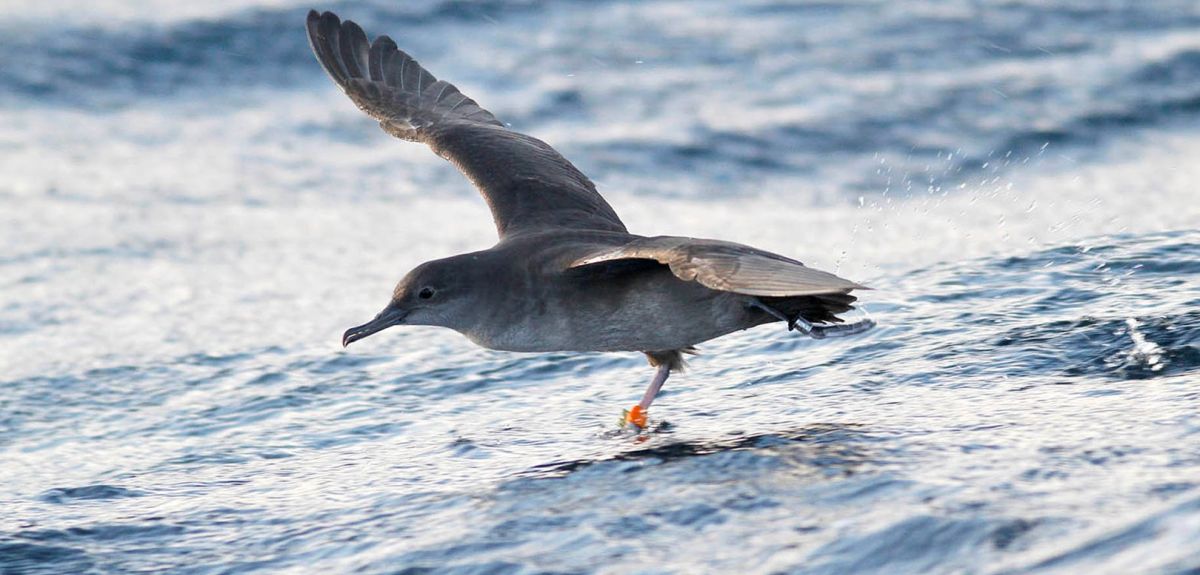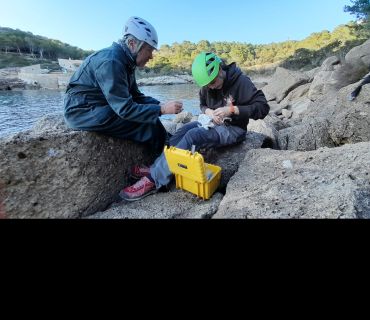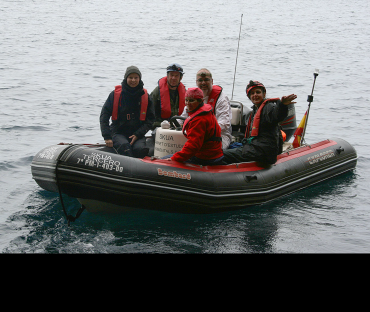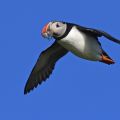
Endangered seabird shows surprising individual flexibility to adapt to climate change
A decade-long study led by the University of Oxford has revealed new insights into the mechanisms that enable animals to adapt to the impacts of climate change. The results have been published today in the journal Proceedings of the National Academy of Sciences.
 Tim Guilford and Sarah Bond from The Oxford Navigation research group tagging a Balearic shearwater at the Sa Dragonera colony, Mallorca. Credit: Louise Maurice.
Tim Guilford and Sarah Bond from The Oxford Navigation research group tagging a Balearic shearwater at the Sa Dragonera colony, Mallorca. Credit: Louise Maurice.For Europe’s most endangered seabird, the Balearic shearwater (Puffinus mauretanicus), a new study has revealed that individual behavioural flexibility and not evolutionary selection is driving this species’ rapid migratory range shift. The findings could help inform conservation strategies for vulnerable migratory bird species.
The results also suggest that individual animals may have greater behavioural flexibility to respond to climate change impacts than previously thought, although this behavioural adaptation may have hidden costs, making the long-term impact on this species unclear.
Balearic shearwaters are long-lived but Critically Endangered mainly because of declines driven by fisheries by-catch, as they can get caught on baited longline hooks and gill nets. They breed in remote corners of the Mediterranean’s Balearic Islands, then migrate to spend the summer off the Atlantic coasts of Spain, France, and increasingly the UK.
 Members of The Oxford Navigation research group on a fieldwork boat in Mallorca. Credit: Russ Wynn.
Members of The Oxford Navigation research group on a fieldwork boat in Mallorca. Credit: Russ Wynn.It was unknown, however, whether this change was being driven by individual birds altering their behaviour, or through natural selection favouring birds that travel further.
To answer this, the researchers compared the migration tracks of the same individuals tagged in multiple years. This revealed that individual birds were shifting their range northwards by an average of 25km per year.
Co-lead author Joe Wynn (Department of Biology, University of Oxford & Institute of Avian Research "Vogelwarte Helgoland"), said: ‘We found that the best predictor of this change in migratory behaviour was the average sea surface temperature in the summering-grounds, suggesting that the birds may well be following changes in underlying marine resources. The fact that individuals can be this flexible in the face of rapid climate change is encouraging.’
But despite this flexibility in their summer destination, Balearic shearwaters are much more constrained in where they breed, so that migrating further north means they have further to fly back in the autumn.
Co-author Professor Tim Guilford (Department of Biology, University of Oxford) added: ‘We found that individuals speed up their return migration the further north they have gone, but this only partially compensates for the extra distance and they still arrive back in the Mediterranean late. We don’t yet know how such delays may affect their breeding success or survival.’
In addition to direct threats both on land and at sea, the increasing threat of climate change poses a challenge for a species that breeds in such a restricted habitat. Results from this study suggest that individual flexibility might help with distribution shifts driven by climate change outside the breeding season, but the question is still open about what might be the consequences of climate change for the birds during breeding, when their movements are constrained by the location of the colony.
Study collaborator José Manuel (Pep) Arcos, SEO/Birdlife
This raises the intriguing question of how the birds know how far away from home they are, when they set off back for the colony. To investigate this, the researchers compared the distance estimates of the different kinds of map that shearwaters might use to guide their migration decisions.
Co-lead author Patrick Lewin (Department of Biology, University of Oxford), said: ‘We found that the route individual birds took on previous migratory journeys was a much better predictor of return speed than an estimate of the straight line distance back to the colony. This suggests that birds do not rely on a large-scale navigational map on migration, but instead have some memory of the route they have flown in the past.’
‘It is possible that individual route memory plays an important role in the migration of many other long-lived seabirds, but further research is needed to clarify this’ he added.
Balearic shearwaters belong to one of the most threatened groups of birds on earth, and are themselves facing potential extinction as a species. This includes both land-based threats, such as predation by invasive species and habitat degradation, and at-sea threats, such as fisheries bycatch, overfishing, pollution, and windfarm development.
The study ‘Climate change drives migratory range shift via individual plasticity in shearwaters’ has been published in Proceedings of the National Academy of Sciences.
 Landmark study definitively shows that conservation actions are effective at halting and reversing biodiversity loss
Landmark study definitively shows that conservation actions are effective at halting and reversing biodiversity loss
 Researchers find oldest undisputed evidence of Earth’s magnetic field
Researchers find oldest undisputed evidence of Earth’s magnetic field
 Honorary degree recipients for 2024 announced
Honorary degree recipients for 2024 announced
 Vice-Chancellor's innovative cross-curricular programme celebrated
Vice-Chancellor's innovative cross-curricular programme celebrated
 New database sheds light on violence in Greek detention facilities
New database sheds light on violence in Greek detention facilities
 Researchers show dynamic soaring isn’t just for albatrosses
Researchers show dynamic soaring isn’t just for albatrosses
 Lack of prey is causing puffin chicks to starve leading to population declines
Lack of prey is causing puffin chicks to starve leading to population declines